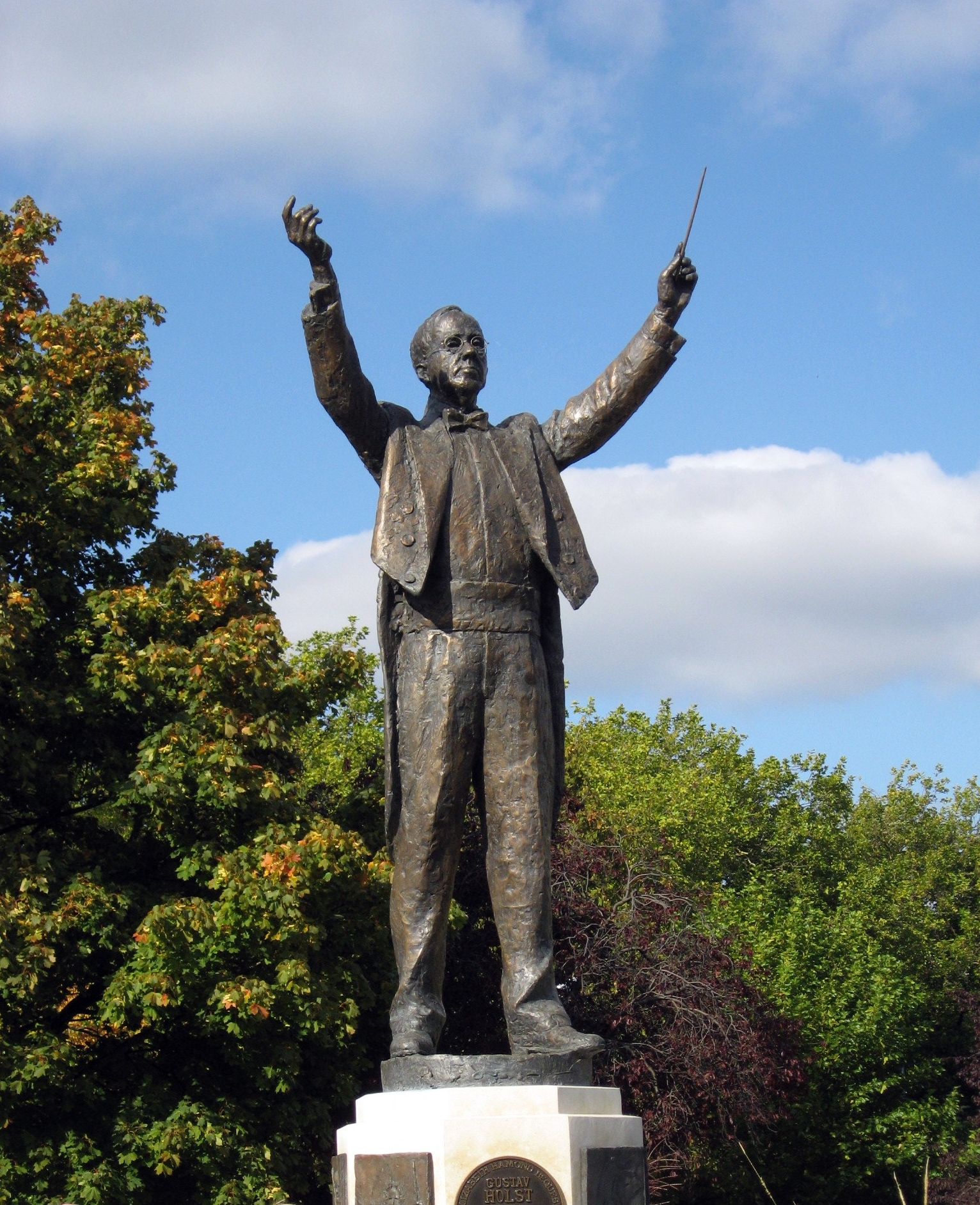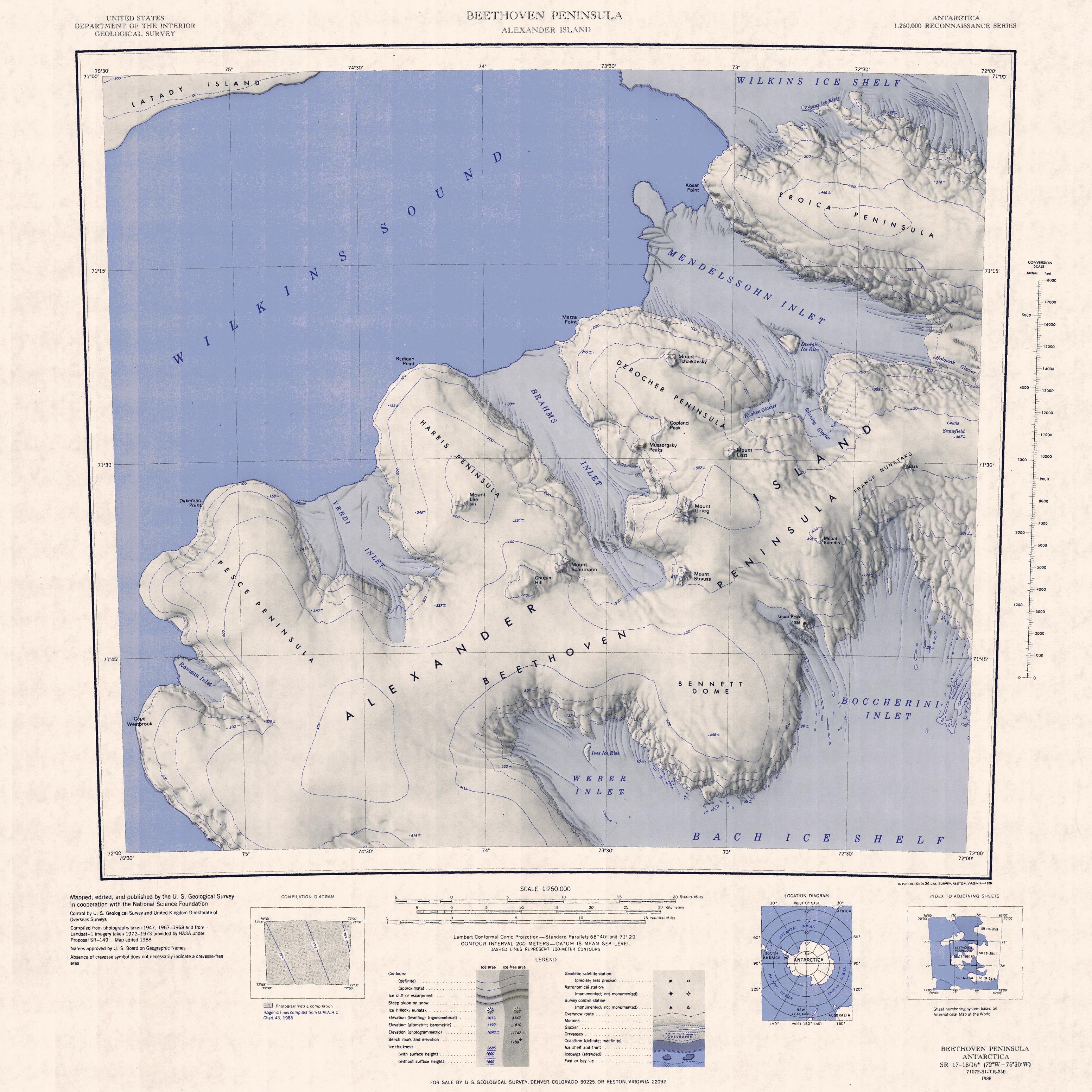|
Holst Peak
Holst Peak () is a rocky pyramidal peak, rising to about , midway between the south end of the Walton Mountains and the LeMay Range in the central part of Alexander Island, Antarctica. It was first mapped by D. Searle of the Falkland Islands Dependencies Survey in 1960 from air photos obtained by the Ronne Antarctic Research Expedition, 1947–48, and was named by the UK Antarctic Place-Names Committee for Gustav Holst, the English composer A composer is a person who writes music. The term is especially used to indicate composers of Western classical music, or those who are composers by occupation. Many composers are, or were, also skilled performers of music. Etymology and Defi .... See also * Mussorgsky Peaks * Khufu Peak * Oberon Peak References Mountains of Alexander Island {{AlexanderIsland-geo-stub ... [...More Info...] [...Related Items...] OR: [Wikipedia] [Google] [Baidu] |
Walton Mountains
Walton Mountains is an isolated chain of three predominantly snow-covered mountain masses, rising to about 1,450 m at Mount McArthur, extending south from Schubert Inlet for 25 miles (40 km) in central Alexander Island, Antarctica. The mountains were first sighted from the air by Lincoln Ellsworth on November 23, 1935, and roughly mapped from photos obtained on that flight by W.L.G. Joerg. Resighted from the air by the United States Antarctic Service in 1940, and in 1947 by the Ronne Antarctic Research Expedition under Ronne. Ronne named the mountains after Lieutenant Colonel R.C. Walton, United States Marine Corps, of the Office of Naval Research, who was instrumental in obtaining the loan of a ship from the Navy and in securing Navy assistance for the Ronne expedition. See also * Havre Mountains * Lassus Mountains * Rouen Mountains The Rouen Mountains () are a prominent mountain range, reaching to about 2,800 m and extending 35 miles (60 km) NW-SE from Mount B ... [...More Info...] [...Related Items...] OR: [Wikipedia] [Google] [Baidu] |
LeMay Range
The LeMay Range () is a mountain range long with peaks rising to , extending in a northwest–southeast direction from Snick Pass to the north side of Uranus Glacier in the central portion of Alexander Island, Antarctica. It was first seen from the air by Lincoln Ellsworth on November 23, 1935, and the north and east portions mapped from photos obtained on that flight by W.L.G. Joerg. Later, it was resighted from the air by the Ronne Antarctic Research Expedition (RARE), 1947–48, and named by Finn Ronne for General Curtis LeMay, Deputy Chief of Air Staff for Research and Development of the then United States Army Air Forces, which furnished equipment for the expedition. The range was remapped in detail from RARE photos by D. Searle of the Falkland Islands Dependencies Survey in 1960. See also * Douglas Range * Stellar Crests References Mountain ranges of Alexander Island {{AlexanderIsland-geo-stub ... [...More Info...] [...Related Items...] OR: [Wikipedia] [Google] [Baidu] |
Alexander Island
Alexander Island, which is also known as Alexander I Island, Alexander I Land, Alexander Land, Alexander I Archipelago, and Zemlja Alexandra I, is the largest island of Antarctica. It lies in the Bellingshausen Sea west of Palmer Land, Antarctic Peninsula from which it is separated by Marguerite Bay and George VI Sound. The George VI Ice Shelf entirely fills George VI Sound and connects Alexander Island to Palmer Land. The island partly surrounds Wilkins Sound, which lies to its west.Stewart, J. (2011) ''Antarctic An Encyclopedia'' McFarland & Company Inc, New York. 1776 pp. . Alexander Island is about long in a north–south direction, wide in the north, and wide in the south. Alexander Island is the second-largest uninhabited island in the world, after Devon Island. History Alexander Island was discovered on January 28, 1821, by a Russian expedition under Fabian Gottlieb von Bellingshausen, who named it Alexander I Land for the reigning Tsar Alexander I of Russia. Wha ... [...More Info...] [...Related Items...] OR: [Wikipedia] [Google] [Baidu] |
Falkland Islands Dependencies Survey
The British Antarctic Survey (BAS) is the United Kingdom's national polar research institute. It has a dual purpose, to conduct polar science, enabling better understanding of global issues, and to provide an active presence in the Antarctic on behalf of the UK. It is part of the Natural Environment Research Council (NERC). With over 400 staff, BAS takes an active role in Antarctic affairs, operating five research stations, one ship and five aircraft in both polar regions, as well as addressing key global and regional issues. This involves joint research projects with over 40 UK universities and more than 120 national and international collaborations. Having taken shape from activities during World War II, it was known as the Falkland Islands Dependencies Survey until 1962. History Operation Tabarin was a small British expedition in 1943 to establish permanently occupied bases in the Antarctic. It was a joint undertaking by the Admiralty and the Colonial Office. At the end of t ... [...More Info...] [...Related Items...] OR: [Wikipedia] [Google] [Baidu] |
Ronne Antarctic Research Expedition
The Ronne Antarctic Research Expedition (RARE) was an expedition from 1947–1948 which researched the area surrounding the head of the Weddell Sea in Antarctica. Background Finn Ronne led the RARE which was the final privately sponsored expedition from the United States and explored and mapped the last unknown coastline on earth and determined that the Weddell Sea and the Ross Sea were not connected. The expedition included Isaac Schlossbach, as second in command, who was to have Cape Schlossbach named after him. The expedition, based out of Stonington Island was the first to take women to over-winter. Ronne's wife, Edith Ronne was correspondent for the North American Newspaper Alliance for expedition and the chief pilot Darlington took his wife. Partial Listing of Discoveries * Mount Abrams - Named for Talbert Abrams, noted photogrammetric engineer * Mount Becker - Named for Ralph A. Becker, legal counsel who assisted in the formation of RARE * Mount Brundage - Named ... [...More Info...] [...Related Items...] OR: [Wikipedia] [Google] [Baidu] |
UK Antarctic Place-Names Committee
The UK Antarctic Place-Names Committee (or UK-APC) is a United Kingdom government committee, part of the Foreign and Commonwealth Office, responsible for recommending names of geographical locations within the British Antarctic Territory (BAT) and the South Georgia and the South Sandwich Islands (SGSSI). Such names are formally approved by the Commissioners of the BAT and SGSSI respectively, and published in the BAT Gazetteer and the SGSSI Gazetteer maintained by the Committee. The BAT names are also published in the international Composite Gazetteer of Antarctica maintained by Scientific Committee on Antarctic Research, SCAR. The Committee may also consider proposals for new place names for geographical features in areas of Antarctica outside BAT and SGSSI, which are referred to other Antarctic place-naming authorities, or decided by the Committee itself if situated in the unclaimed sector of Antarctica. Names attributed by the committee * Anvil Crag, named for descriptive featu ... [...More Info...] [...Related Items...] OR: [Wikipedia] [Google] [Baidu] |
Gustav Holst
Gustav Theodore Holst (born Gustavus Theodore von Holst; 21 September 1874 – 25 May 1934) was an English composer, arranger and teacher. Best known for his orchestral suite ''The Planets'', he composed many other works across a range of genres, although none achieved comparable success. His distinctive compositional style was the product of many influences, Richard Wagner and Richard Strauss being most crucial early in his development. The subsequent inspiration of the English folk music#Folk revivals 1890–1969, English folksong revival of the early 20th century, and the example of such rising modern composers as Maurice Ravel, led Holst to develop and refine an individual style. There were professional musicians in the previous three generations of Holst's family and it was clear from his early years that he would follow the same calling. He hoped to become a pianist, but was prevented by neuritis in his right arm. Despite his father's reservations, he pursued a car ... [...More Info...] [...Related Items...] OR: [Wikipedia] [Google] [Baidu] |
Composer
A composer is a person who writes music. The term is especially used to indicate composers of Western classical music, or those who are composers by occupation. Many composers are, or were, also skilled performers of music. Etymology and Definition The term is descended from Latin, ''compōnō''; literally "one who puts together". The earliest use of the term in a musical context given by the ''Oxford English Dictionary'' is from Thomas Morley's 1597 ''A Plain and Easy Introduction to Practical Music'', where he says "Some wil be good descanters ..and yet wil be but bad composers". 'Composer' is a loose term that generally refers to any person who writes music. More specifically, it is often used to denote people who are composers by occupation, or those who in the tradition of Western classical music. Writers of exclusively or primarily songs may be called composers, but since the 20th century the terms 'songwriter' or ' singer-songwriter' are more often used, particularl ... [...More Info...] [...Related Items...] OR: [Wikipedia] [Google] [Baidu] |
Mussorgsky Peaks
Mussorgsky Peaks () are two rocky peaks rising to about 500 m lying northwest of Mount Grieg on the base of the Derocher Peninsula, a minor, ice-covered peninsula that protrudes out from the Beethoven Peninsula into the Wilkins Ice Shelf in the southwest portion of Alexander Island, Antarctica. A number of peaks in this vicinity first appear on maps by the Ronne Antarctic Research Expedition (RARE), 1947–48. These peaks, apparently included within that group, were mapped from RARE air photos by Searle of the Falkland Islands Dependencies Survey (FIDS) in 1960. Named by the United Kingdom Antarctic Place-Names Committee (UK-APC) after Modeste Mussorgsky (1839–81), Russian composer. See also * Landers Peaks * Miranda Peaks * Richter Peaks Richter Peaks () is a group of peaks rising to about 1,385 m located near the southern extremity of the Walton Mountains, situated in the central portion of Alexander Island, Antarctica. The peaks were named by Advisory Committee on Anta ... [...More Info...] [...Related Items...] OR: [Wikipedia] [Google] [Baidu] |
Khufu Peak
Khufu Peak () is a peak rising to about 745 m located in Planet Heights, near the center of the Fossil Bluff massif, on the east side of Alexander Island, Antarctica, in which the east face of the peak faces towards George VI Sound and the George VI Ice Shelf. For many years this was known to British Antarctic Survey (BAS) workers by the unofficial descriptive name "Pyramid," a name already in use. To avoid duplication, in 1987 the United Kingdom Antarctic Place-Names Committee (UK-APC) applied a new name after Khufu, the second Pharaoh of the Fourth Dynasty of Egypt, who erected the Great Pyramid of El Giza. See also * Duffy Peak Duffy Peak () is a peak southeast of Hageman Peak in the Staccato Peaks, southwest Alexander Island, Antarctica. Dargomyzhsky glacier extends and flows west from the base of Duffy Peak and enters the nearby Bach Ice Shelf. The peak was photogra ... * Giovanni Peak * Giza Peak Mountains of Alexander Island {{AlexanderIsland-geo-stub ... [...More Info...] [...Related Items...] OR: [Wikipedia] [Google] [Baidu] |
Oberon Peak
Oberon Peak () is an isolated nunatak, rising to about 1,250 m, at the head of Uranus Glacier and 8 nautical miles (15 km) north-northwest of Titania Peak in central Alexander Island, Antarctica. First mapped from air photos taken by the Ronne Antarctic Research Expedition (RARE), 1947–48, by Searle of the Falkland Islands Dependencies Survey (FIDS) in 1960. Named by the United Kingdom Antarctic Place-Names Committee (UK-APC) for its association with nearby Uranus Glacier, Oberon being one of the satellites of Uranus Uranus is the seventh planet from the Sun. Its name is a reference to the Greek god of the sky, Uranus (mythology), Uranus (Caelus), who, according to Greek mythology, was the great-grandfather of Ares (Mars (mythology), Mars), grandfather .... See also * Copland Peak * Lamina Peak * Giza Peak Mountains of Alexander Island {{AlexanderIsland-geo-stub ... [...More Info...] [...Related Items...] OR: [Wikipedia] [Google] [Baidu] |

.jpg)


